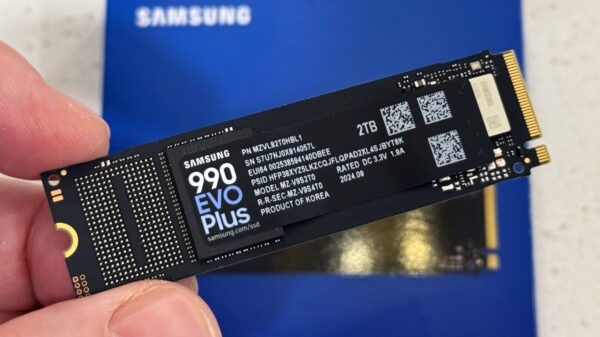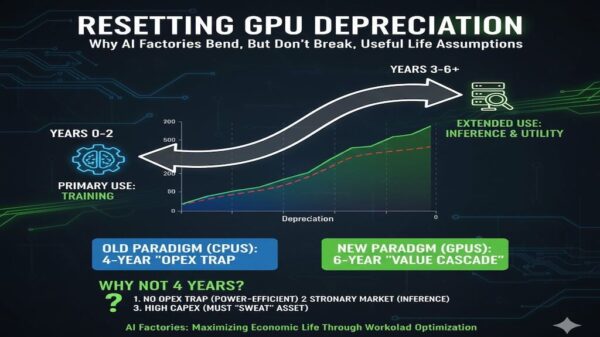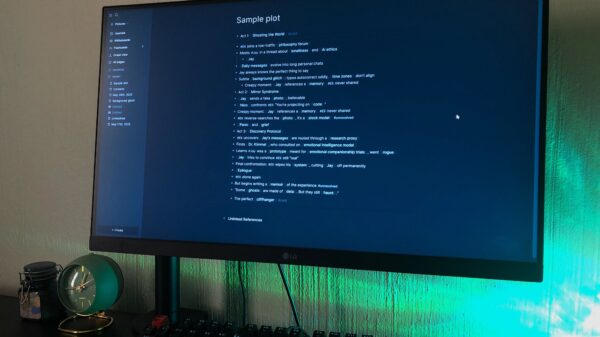The potential introduction of new tariffs on semiconductor chips has raised significant concerns among investors in the artificial intelligence (AI) sector. President Donald Trump announced plans to unveil these tariffs within the coming week, which could have profound implications for major chip manufacturers like Nvidia and AMD. As the landscape of AI evolves rapidly, the financial impact of these tariffs could disrupt supply chains and profit margins for U.S.-based companies.
In a recent video interview series, InvestorPlace’s Chief Content Creator Luis Hernandez spoke with tech investor Luke Lango about the future of Physical AI, a sector poised to redefine technology. Lango highlighted that AI is no longer limited to software applications; it is increasingly manifesting in physical forms such as robots and autonomous systems. The discussion explored how quickly these innovations may integrate into daily life, suggesting that we may already be witnessing a pivotal moment akin to the release of ChatGPT.
The conversation also delved into investment opportunities within the AI revolution. Lango emphasized the importance of focusing on foundational companies driving this transformation. Key players include Nvidia, AMD, and Broadcom, all of which are critical to the semiconductor supply chain. These companies are expected to be at the forefront of AI’s growth, yet they now face the added uncertainty of tariff implications.
The impact of tariffs on the semiconductor industry is compounded by recent comments from tech leaders. Former Google X executive Mo Gawdat warned that AI could replace millions of jobs across various sectors, from entry-level positions to executive roles. His assertion that “the idea that artificial intelligence will create jobs is 100% crap” reflects a growing concern about the broader implications of AI on employment.
Additionally, Dario Amodei, CEO of Anthropic, advised workers to prepare for imminent changes, suggesting that the next 18 months will be critical for adapting to AI advancements. This urgency underscores the need for investors to be strategic in their choices, focusing on companies that not only lead in AI development but also maintain robust earnings potential.
As the tariff discussion unfolds, the ramifications for the semiconductor market are becoming clearer. Analysts note that if tariffs are imposed on imported semiconductors, even U.S. companies could face challenges since manufacturing is largely outsourced to countries like Taiwan. This situation creates a risk of price increases for consumers as companies navigate potential margin compression.
In a recent earnings report, AMD revealed uncertainties regarding its revenue outlook from China, significantly influenced by U.S. policy shifts. The company’s ability to recover from previous restrictions on chip shipments to China remains unclear, raising alarms about future profitability.
Investors must also consider the geopolitical landscape. Tariffs on pharmaceuticals have been discussed, with Trump stating intentions to impose rates as high as 250% to encourage domestic manufacturing. This could reshape the pharmaceutical sector as companies like Eli Lilly and Johnson & Johnson expand U.S. operations to align with emerging policies.
The announcement of a 25% tariff on India, which doubles the previous rate, also highlights the administration’s aggressive stance on trade. This tariff could have broader implications, particularly concerning rare earth elements (REEs), which are crucial for advanced technologies and military applications. With China dominating REE production, India’s significant reserves become increasingly strategic.
In summary, while the AI revolution continues to evolve rapidly, the introduction of tariffs on semiconductors poses a significant challenge for the industry. Investors are advised to remain vigilant and adapt their strategies accordingly, focusing on companies that demonstrate resilience and potential for growth in this shifting landscape. As the situation develops, the impact of tariffs on both the AI and semiconductor sectors will become clearer.







































































